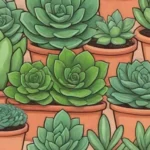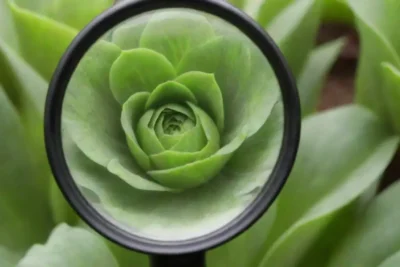
The Role of Succulents in Natural Healers’ Practices

Introduction
In the realm of natural healing, the use of plants and herbs has long been revered for their therapeutic properties. Among these, succulents stand out, not only for their unique aesthetic appeal but also for their potential health benefits. These hardy plants have adapted to survive in some of the most extreme conditions on earth, making them both resilient and fascinating. Their ability to thrive in adverse circumstances often parallels the resilience found in healing practices.
This article aims to explore the important role that succulents play in the practices of natural healers. From their use in traditional remedies to their therapeutic application in modern holistic approaches, we will delve deep into the many facets of how these remarkable plants contribute to overall well-being. We will examine specific types of succulents, their healing properties, and how they are integrated into various generations of healing practices around the world.
Traditional Uses of Succulents in Healing Practices
Succulents, particularly those from the Aloe genus, have been utilized in natural healing for centuries. Aloe Vera, for instance, is renowned for its soothing properties. Ancient civilizations such as the Egyptians referred to it as the "plant of immortality," due to its efficacy in treating wounds and skin ailments. When applied topically, Aloe Vera gel can provide relief from burns, sunburns, and even minor cuts, fostering faster healing and reducing inflammation. The antimicrobial properties of this succulent also play a pivotal role; it helps to fight infections while promoting skin regeneration.
Another succulent that holds significant value in traditional healing is the Jade plant (Crassula ovata). Beyond its visual appeal, the Jade plant has been deployed for crystals healing therapies. Practitioners believe that the presence of this plant can bring good fortune and promote emotional stability. The leaves of the Jade plant are thought to carry energetic properties, making them suitable for use in various meditative practices. When placed in designated areas within healing spaces, they can channel positive energy, easing stress and creating a harmonious environment conducive to healing.
Also worthy of consideration is Barbados aloe (Aloe vera var. barbadensis), popular among practitioners for topical applications. The sap can be harvested and consumed to promote digestive health, providing relief for those suffering from internal ailments, including digestive discomfort and constipation. As natural healers frequently advocate for using plants in their raw form, the tender leaves of this succulent are often blended into drinks or used in soups and desserts for added nutritional benefits.
Medicinal Properties of Specific Succulents
The medicinal properties of succulents stretch beyond skin benefits to various internal health advantages. The Haworthia genus, commonly known as zebra succulent, is particularly regarded for its ability to purify air. While it may not directly heal ailments, the use of Haworthia in living spaces significantly supports the ambiance of natural healing environments. By enhancing air quality, these plants indirectly contribute to the overall health of individuals, making them an integral part of a holistic healing approach.
Moreover, Kalanchoe, a succulent known for its vibrant, flowering appearance, offers interesting medicinal potential. Specific species, such as Kalanchoe pinnata, have historically been utilized in traditional medicine to address ailments like respiratory issues and gastrointestinal disturbances. The succulent's leaves possess compounds that exhibit anti-inflammatory and analgesic properties, thus becoming an essential ingredient in herbal teas and topical applications. Practitioners often grind the leaves to release their juices or prepare them as a poultice, illustrating the resilience of traditional methods.
 The Potential of Succulent Extracts in Modern Medicine
The Potential of Succulent Extracts in Modern MedicineIn addition to the aforementioned plants, succulents like Sedum species are noted for their abilities to support metabolic health. Many natural healers integrate Sedum into their practices, believing it can assist with regulating blood sugar levels. Its bioactive compounds are thought to improve insulin sensitivity and foster cellular health, making it a preferred option when dealing with metabolic syndromes or diabetes management.
The Emotional and Spiritual Aspects of Succulent Healing
Beyond their physical attributes, succulents also play a vital role in emotional and spiritual healing. The act of caring for succulents, both in cultivation and maintenance, can serve as a meditative practice. Engaging with plants has a proven ability to reduce stress levels and heighten feelings of well-being. The tactile involvement with the soil, along with the care needed to keep these plants thriving, fosters a sense of connection to nature, which is integral to many natural healing philosophies.
For many cultures, succulents are not just plants; they embody a connection with the earth and symbolize resilience. In healing communities, succulents are often utilized in rituals aimed at empowering individuals and fostering healing. For instance, the practice of using succulents in energy healing sessions can help ground individuals, aligning their emotions with nature’s calming energy.
Furthermore, the symbolism of succulents often extends to their ability to thrive in adverse environments. Healers may present succulents as gifts or tokens to individuals undergoing emotional turmoil, highlighting the idea that just as these plants flourish despite challenges, so too can individuals emerge from their struggles stronger and more vibrant.
Incorporating Succulents Into Healing Practices Today

With the resurgence of interest in holistic health, modern natural healers are increasingly incorporating succulents into their healing modalities. These practices not only include the traditional applications we've discussed but also extend to the creation of herbal tinctures, infusions, and elixirs. For instance, blending succulent leaves with other herbs can yield potions that target specific health concerns, such as anxiety or digestive issues. The versatility of succulents allows for creative formulations that engage multiple senses, enhancing the healing experience.
Additionally, succulents fit seamlessly into the burgeoning home remedy culture. The rise of DIY projects has encouraged individuals to explore the therapeutic benefits of succulents at home. Simple preparations like Aloe Vera gel for skin conditions or Kalanchoe poultices for inflammation can empower individuals to take charge of their health, reflecting the principle of self-healing that is foundational in many natural healing disciplines.
 A Succulent a Day: Daily Health Benefits from Nature's Gift
A Succulent a Day: Daily Health Benefits from Nature's GiftMoreover, the aesthetic quality of succulents has made them popular in wellness spaces such as yoga studios, wellness retreats, and spas. Their presence can enhance the ambiance of tranquility and focus, making them an essential part of the healing environment. Their drought-resistant properties often symbolize sustainable living, further aligning with the holistic approach many practitioners espouse, thus serving as a reminder of nature's resilience and our eternal connection to it.
Conclusion
The integration of succulents in natural healing practices underscores their versatility and value, from ancient remedies to contemporary wellness trends. As significant sources of medicinal properties, succulents have carved out a niche in the healing community, addressing not just physical ailments but also emotional and spiritual needs. Aloe, Jade, Haworthia, and Kalanchoe, among others, embody the rich tapestry of holistic health, underscoring the essential connection between nature and well-being.
Furthermore, the act of growing and caring for succulents offers therapeutic benefits that extend to the emotional and mental well-being of individuals. As practitioners and individuals alike continue to explore the potential of these charming plants, it becomes increasingly clear that succulents are more than just ornamental houseplants; they represent a holistic approach to health that embraces the day-to-day realities of life.
In light of their resilience, beauty, and healing properties, the role of succulents in natural healers’ practices is profound and multifaceted. As we navigate the challenges of modern health crises, turning to nature and the wisdom of plants like succulents can lead us toward personal empowerment, sustainability, and ultimately, a deeper connection to ourselves and our planet in the healing journey.
If you want to read more articles similar to The Role of Succulents in Natural Healers’ Practices, you can visit the Medicinal Uses category.






You Must Read